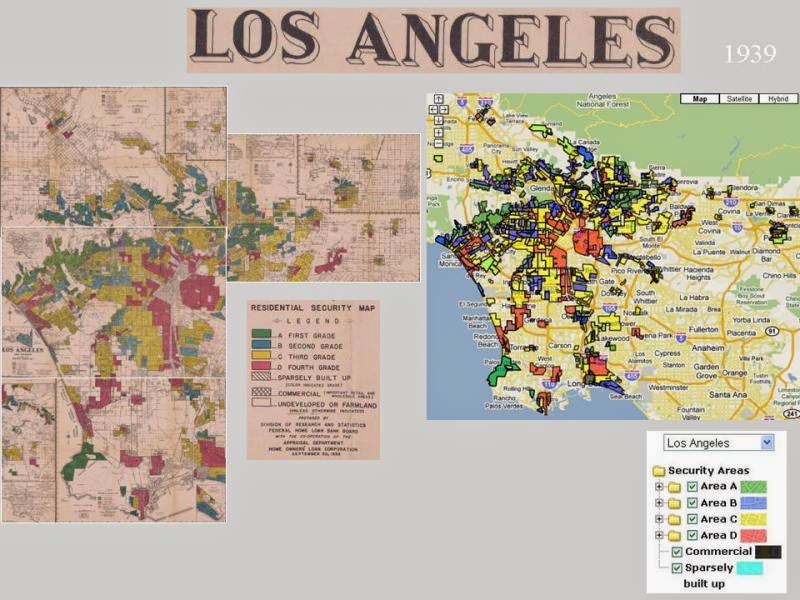Residential
segregation is defined by the existence of two or more groups residing in
separate areas, like neighborhoods, in an “urban environment” (University of Chicago, The Dimensions of Residential Segregation). It began most dramatically
following World War I when there was a tremendous demand for workers in the
northern United States. The mass influx
of African American workers was not well received in the North and Jim Crow laws were
having a widespread impact on the country, click here to learn more. Social policy was being influenced by the changes taking place.
The Federal Government
implemented policies and measures to segregate housing for Caucasians from
other races. It began by supporting the
use of restrictive
covenants, to prohibit home ownership by anyone besides “the Caucasian race”
(The
Historical Roots of Housing Segregation).
By 1934, the government established the Federal
Housing Administration with the intent to “address instability in the housing
markets – and damage done by the Great Depression, by promoting buying and lending.”
(AllGov,
Department of Housing and Urban Development). There was a catch, however,
as loans were granted to residents living in neighborhoods that were considered
“safe investments” (Boston
Fair Housing, FHA Mortgage Insurance Requirements Utilize Redlining).
Banks went so far as to “redline” areas on a map to purposely exclude areas where African Americans lived. This was intended to ensure that locations with a high population of African Americans would be denied loans because it was seen as a tremendous risk to invest in non-white communities” (Civil Rights, The Historical Roots of Housing Segregation). Click here to see additional redlining maps.
 |
| 1939 Map of Los Angeles with Redlining
Residential
segregation still exists to this day, in some areas it exists as a continuation
of practices that began decades ago resulting from ill-conceived social
policies. Recently, the New York Attorney General, Eric Schneiderman filed
a lawsuit against Evans Bank for purposely denying mortgages in African
American communities on the east side of Buffalo. The
bank solely publicized their services in newspapers that
were not delivered to the east side resulting in 4 out of 1,114
applications from black people from 2009-2012. (NBC,
Bank Accused of 'Redlining' Black Neighborhoods in Buffalo).
To learn more about the case, click here.
 Map created by the New York Attorney General outlining Evan Bank's redlining practice. |
In other places, people who share a race, religion,
or ethnicity established their own communities because of the comfort they find
in being with people who share a similar background. In this
context, residential segregation may be seen in a positive light, a far cry
from its original intent.
This might be somewhat of a good thing, because it lets people of a certain race live together in a neighborhood to establish an identity, but then again, checking exclusively in these areas was what provided an unfair arrest ratio in the Drug War.
ReplyDeleteThis might actually be a good thing though. In a study that was conducted about immigrants, it showed that crime rates actually went down in immigrant communities. Although this isn't immigrants, the study speaks volumes to the sense of community and kinship that is felt among groups of people with shared histories. The fact that these people are being ostracized and have a common thread can make them feel connected on many levels and want a real sense of community with trust and equality among them.
ReplyDeleteWhile residential segregation can thicken the racial or ethnic ties one has with their group, it can be used to limit resources from one group or another. In practice, many minority driven areas are given limited resources in comparison to the dominant race or ethnicity. For example, some employers will not higher individuals who live in areas that are deemed as the "rough part of town." These areas that are deemed as such tend to be the homes of minorities and therefore makes it harder for minorities to be hired. In order for residential segregation to work at all is if these areas did not vary in economic or social standing based on race or ethnicity.
ReplyDeletehe greater part of the leases on that land won't be restored however will come back to the proprietors and the homes over that land will be expelled by the property holders to their detriment. the opus condo
ReplyDelete